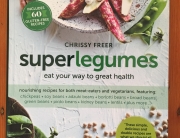 It’s Community Detox month which means we are all eating gluten free. Embarking on a gluten free diet can be a daunting experience. Gluten is found in wheat, rye, kamut, spelt, barley and oats, which means that many previously staple foods may be banished from the pantry. So which grains are safe to eat?
It’s Community Detox month which means we are all eating gluten free. Embarking on a gluten free diet can be a daunting experience. Gluten is found in wheat, rye, kamut, spelt, barley and oats, which means that many previously staple foods may be banished from the pantry. So which grains are safe to eat?
Rice
Rice is one of the most versatile grains, and it’s neutral taste means that it goes with just about everything. Use brown rice where possible, or go for basmati if you need a white rice. Give the highly processed rice products a miss though, because they can play havoc with your blood glucose levels.
Corn
Whether it’s pasta, cous cous or crackers, corn has you covered. Forget the debate about whether it’s a vegetable or a grain, corn acts like a grain, and is fantastic with savoury dishes. It holds together well and tastes great!
Millet
Millet is sometimes overlooked as a gluten free option, probably because it takes a little longer to cook. But millet has a yummy mild taste, is full of minerals and is fantastic in porridge, bread and baked goods, so it’s worth the extra effort.
Buckwheat
One of the most nutrient dense grains, buckwheat has quite a strong, nutty flavour. It goes well with robust dishes, like mushrooms, roasted tomatoes and dark green leafy veggies. Buckwheat grains can also be sprouted first, making them easier to digest.
Quinoa
Not actually a grain, quinoa is a seed which, when cooked, behaves like a grain. To cook it, follow exactly the same directions as you would for rice. Quinoa goes beautifully with stir fries, casseroles, curries, Mexican food, and cooked quinoa can even be made as a bircher muesli.
Amaranth
Amaranth is similar to quinoa, except the grains are much smaller in size. The cooking time is the same as for quinoa, so why not combine the two for a more interesting dish?
Other gluten free options
There are heaps of gluten free options out there if you are adventurous. From coconut flour to almond meal, and even banana flour, there are plenty of baking options available. And when it comes to pasta, try products made from legumes like mung beans.
Gluten free products are often highly processed, so make sure you use whole grains where possible, and always read the labels of products to make sure they are free of nasty additives like MSG and artificial colours and flavours.
Try to mix up your grains. This is the best way to make sure you are getting a wide variety of nutrients, and it also stops you from getting bored! Most importantly, be bold with your choices and have fun!
By Jules Galloway
Hi, my name is Jules Galloway and I’m a qualified naturopath, food and wine lover, beginner surfer and recent seachanger, living just 10 minutes from Byron Bay. My goal is to educate and motivate you to explore a variety of foods, to help you to make small, achievable changes to increase your wellbeing, and to spread the word that it’s easier than you think to feel awesome again! Connect with Jules on Facebook, Twitter or her website.







































































































